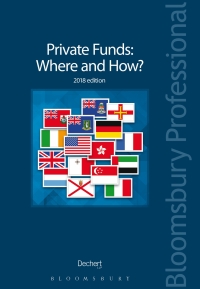Question
Exhibit 1 Sales forecasts: The forecasts are based on projected levels of demand. The firm could face weak, average, and strong demand. All the numbers
Exhibit 1 Sales forecasts:
The forecasts are based on projected levels of demand. The firm could face weak, average, and strong demand. All the numbers are expressed in todays dollars. The forecasted average inflation per year is 3.0%.
| Demand level | Weak | Average | Strong |
| Probability | 20% | 50% | 30% |
| Price per tent | $750 | $825 | $900 |
| Units sold per year | 43,500 | 44,000 | 44,500 |
| Labor cost per tent | $250 |
|
|
| Parts | $175 |
|
|
| Selling General & Administrative | $7,000,000 |
|
|
| Average warranty cost per year per tent for the first five years is $20. The present value of this cost will be used as a cost figure for each tent. Afterwards, the tent owners will become responsible the repairs. | |||
| The tents can be produced for eight years. Afterwards, the designs become obsolete. | |||
Exhibit 2 Windows costs:
Window choices:
| Window material | Lexan | Plexiglas |
| Price per tent and installation | $50 | $45 |
| Average annual warranty cost per year for five years. Afterwards, the tent owner will become responsible the repairs*. | $4 | $5 |
| The chosen window material will be installed in every tent and will become a cost figure for each unit produced.
* The material manufacturers are not providing Formers with any warranty. However, Formers will provide warranty to its customers. After the initial five years, the tent owners may purchase extended warranty from any insurance company that offers such packages. | ||
Exhibit 3 Investment needs:
To implement the project, the firm has to invest funds as shown in the following table:
| Year 0 | Year 1 |
| $12 million | Production and selling of commercial appliances starts |
MACRS depreciation will be used.
To facilitate the operation of manufacturing the tents, the company will have to allocate funds to net working capital (NWC) equivalent to 10% of annual sales. The investment in NWC will be recovered at the end of the project.
Exhibit 4 Financing
The following assumptions are used to determine the cost of capital. Historically, the company tried to maintain a debt to equity ratio equal to 0.50. This ratio was used because lowering the debt implies giving up the debt tax shield and increasing it makes debt service a burden on the firms cash flow. In addition, increasing the debt level may cause a reduced rating of the companys bonds. The marginal tax rate is 35%. All the numbers are expressed in todays dollars. The forecasted average inflation per year is 3.0%.
Cost of debt:
The companys bond rating is roughly at the high end of the A range. Surveying the debt market yielded the following information about the cost of debt for different rating levels:
| Bond rating | AA | A | BBB |
| Interest cost range | 4.5% ~ 5.5% | 5.25% ~ 6.5% | 6.5% ~ 9% |
The companys current bonds have a rating of A.
Cost of equity:
The current 10-year Treasury notes have a yield to maturity of 3% and the forecast for the S&P 500 market premium is 6.5%. The companys overall b is 1.6.
b analysis:
The company was only able to get a information about toy manufacturers rather than tent manufacturers. The information is presented hear.
| Company | Formers | toys Plus | General toys | Universal Games | Toys, Inc. | International Toys |
| Over all b | 1.6 | 1.4 | 1.3 | 1.6 | 1.2 | 1.35 |
| Debt to equity | 0.5 | 0.3 | 0.5 | 0.45 | 0.35 | 0.25 |
| Percentage of income from toys | 50 | 45 | 90 | 95 | 85 | 85 |
1. What is the annual operating cash flow?
Step by Step Solution
There are 3 Steps involved in it
Step: 1

Get Instant Access to Expert-Tailored Solutions
See step-by-step solutions with expert insights and AI powered tools for academic success
Step: 2

Step: 3

Ace Your Homework with AI
Get the answers you need in no time with our AI-driven, step-by-step assistance
Get Started


